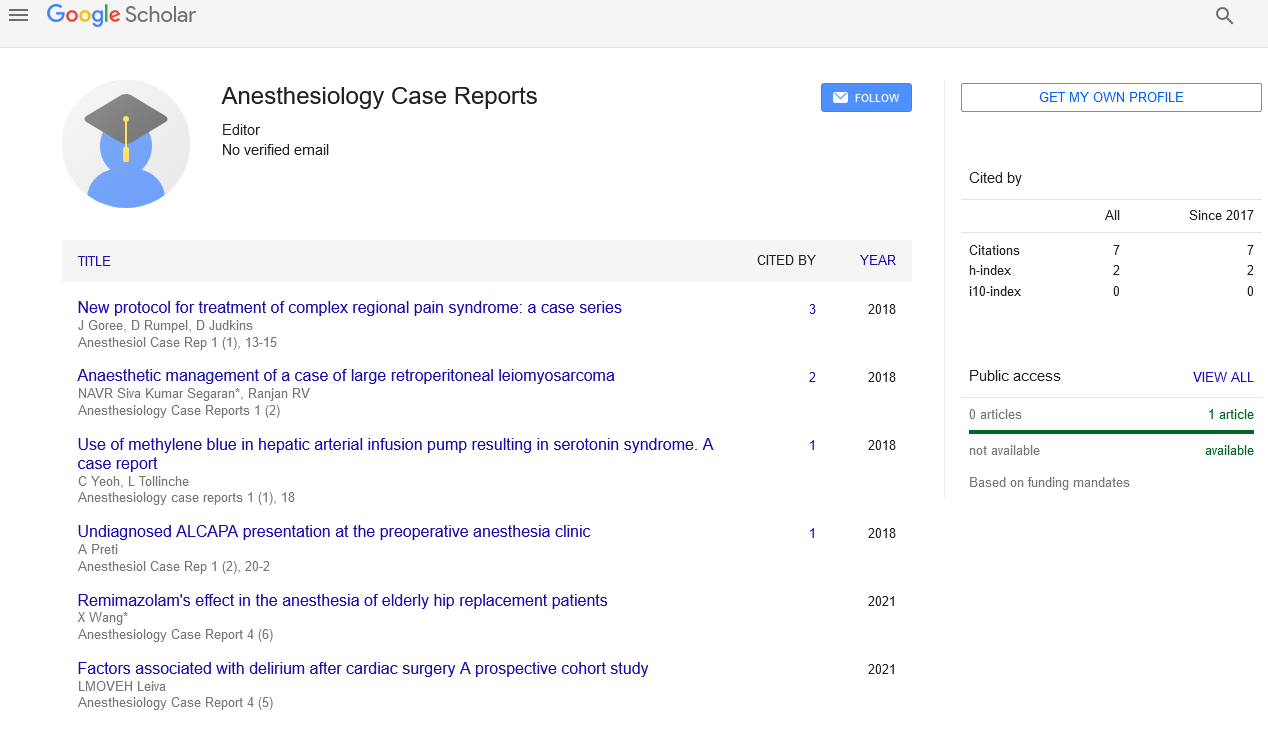Lidocaine gel for analgesia and patient comfort
Received: 11-Mar-2022, Manuscript No. pulacr-22-4966; Editor assigned: 14-Mar-2022, Pre QC No. pulacr-22-4966 (PQ); Reviewed: 21-Mar-2022 QC No. pulacr-22-4966 (Q); Revised: 24-Mar-2022, Manuscript No. pulacr-22-4966 (R); Published: 28-Mar-2022, DOI: 10.37532. pulacr.22.5.2.3
This open-access article is distributed under the terms of the Creative Commons Attribution Non-Commercial License (CC BY-NC) (http://creativecommons.org/licenses/by-nc/4.0/), which permits reuse, distribution and reproduction of the article, provided that the original work is properly cited and the reuse is restricted to noncommercial purposes. For commercial reuse, contact reprints@pulsus.com
Abstract
Lidocaine is the most often used local anaesthetic for local infiltration. It is generally considered to be safe and effective. It's used to give local anaesthetic before laceration repair or other painful operations like lumbar puncture. The pain associated with injection with lidocaine as a local anaesthetic is a disadvantage. A number of methods for minimising injection pain have been investigated. Lidocaine buffering to a neutral pH is thought to be useful in minimising injection pain. Lidocaine's anaesthetic potency is unaffected by buffering, and the resultant solution is stable.
Keywords
ultrasonography; anaesthetic care; noninferiority
Commentary
Anesthetic treatments for upper limb surgery include interscalene and axillary brachial plexus blocks. While ultrasonography has improved improved the quality and safety of these peripheral nerve blocks, needle insertion and manipulation can cause significant discomfort, which can impair patient compliance and raise anxiety, dread, and dissatisfaction with anaesthetic care. Prior to the nerve block, some practitioners infuse the skin with 2% lidocaine to reduce pain. This, however, entails additional needle insertions and injections, which can cause patient discomfort and raise the risk of intraneural or intravascular damage [1,2].
For ultrasound-guided nerve blocks, gel is employed as an acoustic coupling medium. Although a non-medicated water-based gel is the most popular option, a water-based lidocaine 2% gel is also popular, and its cost is comparable to the non-medicated gel. When administered topically, lidocaine gel can help with needle insertion and injection pain, as well as saving time because the gel base can act as an acoustic coupling medium for ultrasound imaging [3]. As a result, the use of lidocaine gel would reduce the need for multiple injections to infiltrate local anaesthetic into the tissues, as well as the time spent applying extra sterile gel for ultrasonic conduction [4].
Noninferiority trials are frequently used to uncover innovative medicines that have similar efficacy to the standard treatment while also providing benefits that the standard treatment may not [5]. Using lidocaine gel, for example, removes the need for additional injections, which increases the risk of tissue and nerve injury, hematoma, and/or patient discomfort. Furthermore, lidocaine gel can be employed as an acoustic coupling medium, eliminating the requirement for sterile gel, which is commonly used during ultrasound imaging. The patient's age and emotional condition are both known to influence the amount of pain response. The extent of the pain response may have been reduced by utilising volunteers who were not harmed and were experienced with intrusive procedures. Differences in injection discomfort would be harder to discern as a result. The low absolute magnitude of the pain scores recorded may represent some of these characteristics, while comparing absolute differences in pain scores between participants may be methodologically inaccurate [6].
Lidocaine 2% gel did not provide inferior analgesia to lidocaine 2% infiltration for needle insertion or injection pain during interscalene or axillary brachial plexus blocks under the parameters of our investigation. When compared to earlier research with different topical medications, Lidocaine gel may be more effective when used for a longer period before block performance. Lidocaine 2% gel is noninferior to lidocaine 2% infiltration for analgesia during interscalene and axillary brachial plexus blocks, and it eliminates the need for additional injections.
REFERENCES
- Ranganath A, Srinivasan KK, Iohom G. Ultrasound guided axillary brachial plexus block. Med Ultrason. 2014;16(3):246-51.
Google scholar Crossref - Hu P, Harmon D, Frizelle H. Patient comfort during regional anesthesia. J Clin Anesth. 2007;19(1):67-74.
Google scholar Crossref - Eidelman A, Weiss JM, Lau J, et al. Topical anesthetics for dermal instrumentation: a systematic review of randomized, controlled trials. Ann Emerg Med. 2005;46(4):343-51.
Google scholar Crossref - Brenner SM, Rupp V, Boucher J, et al. A randomized, controlled trial to evaluate topical anesthetic for 15 minutes before venipuncture in pediatrics. Am J Emerg Med. 2013;31(1):20-5.
Google scholar Crossref - McGlone R, Bodenham A. Reducing the pain of intradermal lignocaine injection by pH buffering. Arch Emerg Med. 1990;7(2):65-8.
Google scholar Crossref - Sapin P, Petrozzi R, Dehmer GJ. Reduction in injection pain using buffered lidocaine as a local anesthetic before cardiac catheterization. Cathet Cardiovasc Diagn. 1991;23(2):100-2.
Google scholar Crossref





